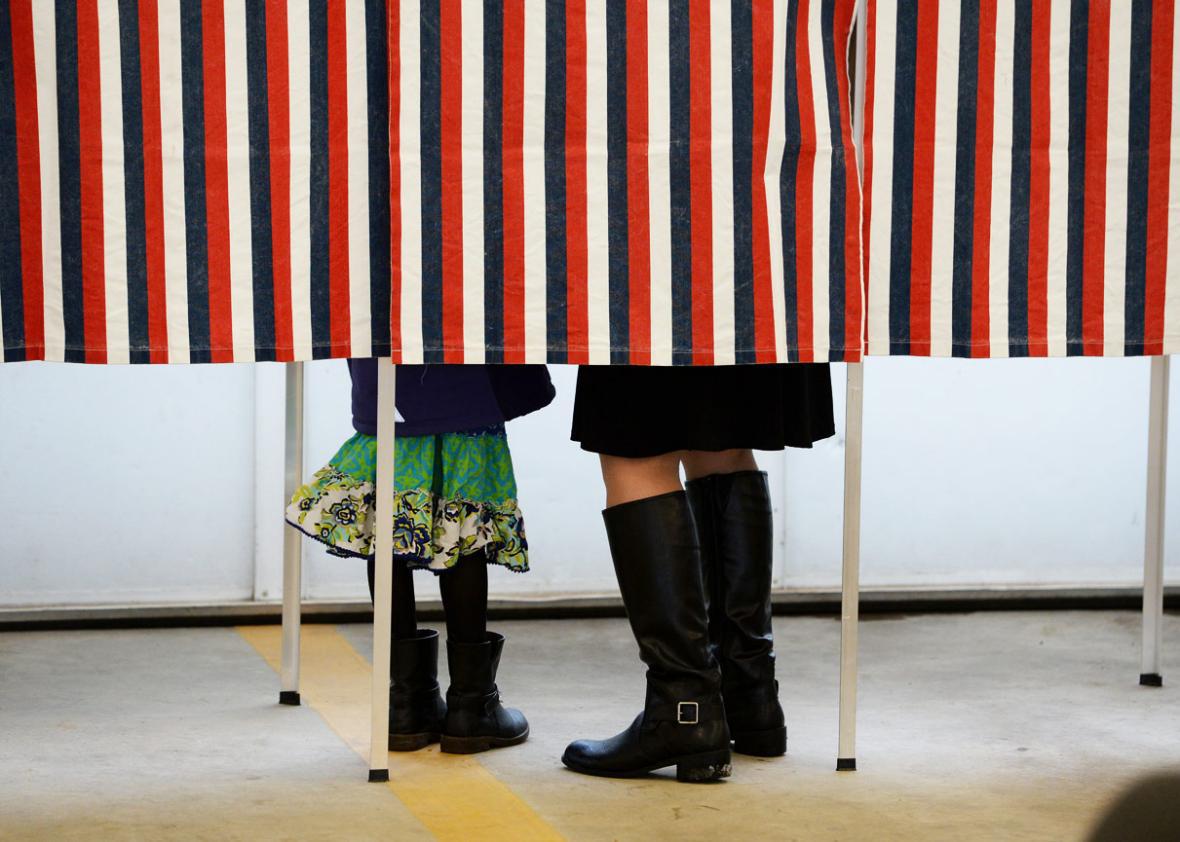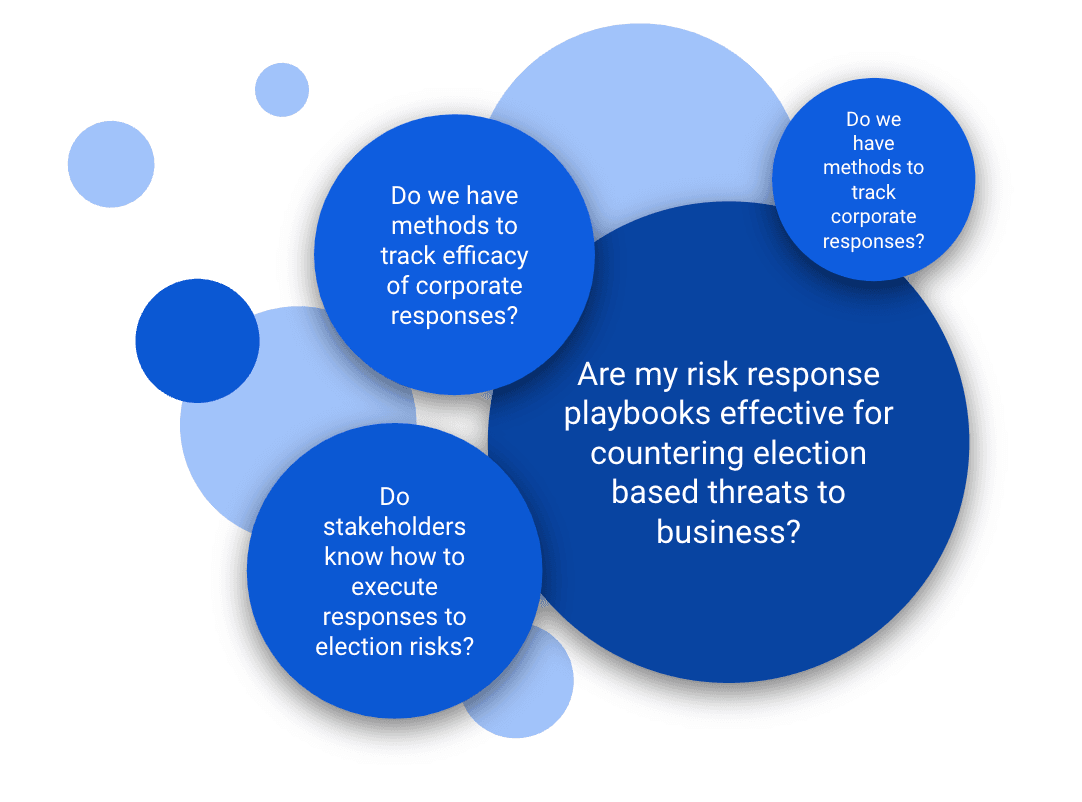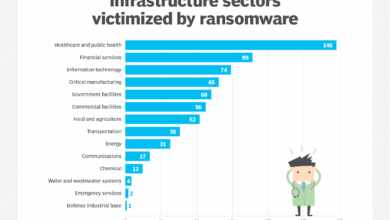
Examining Potential Election Vulnerabilities Are They Avoidable?
Examining potential election vulnerabilities are they avoidable – Examining potential election vulnerabilities: are they avoidable? This question is more critical than ever, as our reliance on technology in elections increases. From outdated voting machines to sophisticated cyberattacks and the ever-present risk of human error, the integrity of our electoral process faces numerous threats. This exploration delves into the vulnerabilities within voter registration, election machines, cybersecurity, human factors, post-election audits, and accessibility, examining both the challenges and potential solutions to secure a fair and trustworthy election.
We’ll dissect the intricacies of online voter registration, analyze the security of voting machines (both hardware and software), and explore the various ways cyberattacks can compromise election results. We’ll also look at the human element – mistakes, malfeasance, and how to mitigate them – and the crucial role of post-election audits in ensuring accuracy. Finally, we’ll consider how to make voting more accessible and inclusive for all citizens.
Voter Registration Vulnerabilities
Securing the voter registration process is paramount for fair and accurate elections. Weaknesses in this system can lead to disenfranchisement, voter suppression, and even manipulation of election results. This section explores the vulnerabilities inherent in current systems and proposes improvements for a more secure future.
Weaknesses in Current Voter Registration Systems
Many current voter registration systems suffer from outdated technology and a lack of standardized procedures. This creates inconsistencies across jurisdictions, making it difficult to maintain accurate and up-to-date voter rolls. Data breaches are a significant concern, as sensitive personal information is often stored without adequate security measures. Furthermore, the manual processes involved in updating voter information can be prone to human error, leading to inaccuracies and inefficiencies.
A lack of robust verification mechanisms can also allow for duplicate registrations or fraudulent entries. Finally, the accessibility of registration processes varies widely, potentially excluding certain segments of the population.
Risks Associated with Online Voter Registration
While online voter registration offers convenience, it also introduces new security risks. These systems are vulnerable to hacking and data breaches, potentially exposing sensitive personal information to malicious actors. The lack of in-person verification can make it easier for individuals to register fraudulently using false identities. Furthermore, online systems can be susceptible to denial-of-service attacks, preventing legitimate voters from registering.
The digital divide also presents a challenge, as not all citizens have equal access to the internet and the technology required for online registration. Finally, ensuring the integrity of digital signatures and preventing manipulation of online forms requires sophisticated security protocols.
Comparison of Voter Registration Methods and Their Vulnerabilities
Different voter registration methods present varying levels of vulnerability. In-person registration, while more secure in terms of identity verification, can be less convenient and may not be accessible to all. Mail-in registration, while convenient, is susceptible to loss or tampering. Online registration, as discussed above, presents its own set of security challenges. Each method requires a different set of security protocols to mitigate its inherent vulnerabilities.
For example, in-person registration might benefit from biometric authentication, while online registration requires strong password policies, multi-factor authentication, and robust encryption.
Design of a More Secure Voter Registration System
A more secure voter registration system should incorporate several key features. First, a robust and centralized database with advanced security measures, including encryption and regular security audits, is crucial. Second, multi-factor authentication, such as a combination of password, email verification, and potentially biometric authentication, should be implemented. Third, rigorous data validation and error-checking mechanisms should be in place to prevent fraudulent registrations.
Fourth, the system should be designed with accessibility in mind, catering to individuals with disabilities and those with limited access to technology. Finally, regular updates and security patches are necessary to address emerging vulnerabilities.
Security Features of Various Voter Registration Systems
| System Name | Online/In-Person | Authentication Methods | Security Features |
|---|---|---|---|
| System A (Example) | In-Person | Signature Verification | Data Encryption, Regular Audits |
| System B (Example) | Online | Password, Email Verification | Multi-factor Authentication, CAPTCHA |
| System C (Example) | Mail-in | Signature Comparison | Secure Mailing Procedures, Tracking Numbers |
| Proposed System | Online and In-Person | Password, Email Verification, Biometric Authentication | Data Encryption, Multi-factor Authentication, Regular Audits, Secure Database, Accessibility Features |
Election Machine Security

Ensuring the security of voting machines is paramount to maintaining faith in the democratic process. Vulnerabilities in these machines, whether stemming from software flaws or hardware weaknesses, can undermine the integrity of elections and potentially lead to inaccurate results or even widespread manipulation. This section explores the potential vulnerabilities, past incidents, and crucial security measures necessary to safeguard our voting systems.
Software Vulnerabilities in Voting Machines
Voting machine software is complex, and flaws in its design or implementation can create avenues for exploitation. These vulnerabilities can range from simple coding errors that allow for unintended behavior to sophisticated backdoors that grant unauthorized access. For example, a poorly secured software update mechanism could allow malicious actors to inject malware, altering vote counts or disabling the machine entirely.
Furthermore, the lack of transparency in the software development process, including inadequate code review and testing, can exacerbate these risks. A lack of robust authentication mechanisms can also enable unauthorized modification of software components.
Hardware Vulnerabilities in Voting Machines
Hardware vulnerabilities represent another significant threat to election security. Physical tampering, such as replacing internal components or accessing memory chips, can alter vote tallies without leaving easily detectable traces. Machines lacking tamper-evident seals or robust physical security measures are particularly vulnerable. Furthermore, the use of outdated or unsupported hardware can introduce vulnerabilities that are difficult to patch or mitigate.
For example, machines relying on outdated operating systems or encryption methods may be susceptible to known exploits.
Examples of Past Election Security Breaches
While specific details of many breaches remain confidential for security reasons, several documented cases illustrate the potential for compromise. In some instances, researchers have demonstrated the ability to manipulate vote counts through software vulnerabilities. Other cases have involved physical tampering with voting machines, resulting in altered vote totals. These incidents underscore the need for continuous vigilance and robust security measures to prevent similar occurrences.
So, we’re examining potential election vulnerabilities – are they avoidable? Building secure systems is crucial, and the tech behind it matters. I’ve been reading up on domino app dev, the low-code and pro-code future , and thinking how streamlined development could impact the creation of more robust, secure election platforms. Ultimately, preventing vulnerabilities comes down to a combination of strong design and careful implementation, no matter the tech used.
The lack of consistent, standardized security audits across different jurisdictions makes it difficult to fully assess the extent of past breaches and their impact.
Methods for Securing Voting Machines
Securing voting machines requires a multi-faceted approach. This includes rigorous software development practices, employing secure coding standards, and implementing comprehensive testing procedures. Regular software updates are essential to address newly discovered vulnerabilities. Hardware security measures, such as tamper-evident seals and robust physical security, are equally critical. Independent audits of both software and hardware are necessary to verify the integrity of the voting system.
Furthermore, the use of open-source software, where feasible, can foster greater transparency and allow for broader scrutiny of the code. Employing strong encryption methods to protect sensitive data is another vital aspect.
Best Practices for Maintaining the Integrity of Voting Machines
Maintaining the integrity of voting machines necessitates a commitment to several best practices. These include regular security assessments to identify and address vulnerabilities, comprehensive training for election officials on proper machine handling and maintenance, and the establishment of clear chain-of-custody procedures to track the machines throughout the electoral process. Robust post-election audits, including manual recounts and comparisons with electronic tallies, are crucial to verify the accuracy of the results.
Regular replacement of outdated machines with modern, secure models is also a necessary step to prevent vulnerabilities associated with aging technology. Finally, establishing strong cybersecurity protocols, including network security and access controls, is crucial to prevent unauthorized access and manipulation.
Rigorous Testing Procedures for Voting Machine Software
Implementing rigorous testing procedures for voting machine software is crucial to identify and mitigate vulnerabilities before they can be exploited. This should involve multiple stages of testing, including unit testing, integration testing, system testing, and security testing. Unit testing verifies the functionality of individual components, while integration testing ensures that different components work together correctly. System testing validates the overall functionality of the software, and security testing assesses its resilience against various attacks.
The use of automated testing tools can significantly improve the efficiency and thoroughness of the testing process. Independent third-party audits of the testing process can provide further assurance of its rigor and objectivity. This process should also incorporate penetration testing to simulate real-world attacks and identify weaknesses in the system’s security.
Cybersecurity Threats to Elections
The digital age has fundamentally altered how elections are conducted, introducing both opportunities and significant vulnerabilities. While technology offers efficiency and accessibility, it also opens the door to a range of sophisticated cyberattacks that can undermine the integrity and fairness of the electoral process. Understanding these threats and implementing robust countermeasures is crucial for maintaining public trust and ensuring the security of democratic institutions.
Types of Cyberattacks Targeting Elections
Elections are susceptible to a variety of cyberattacks, each with the potential to disrupt the process at various stages. These attacks can range from relatively simple denial-of-service (DoS) attacks, which flood election websites with traffic, making them inaccessible to voters, to more sophisticated attacks targeting voter registration databases or election management systems. Malware infections can compromise sensitive data, while phishing campaigns can target election officials, tricking them into revealing login credentials or installing malicious software.
Advanced persistent threats (APTs), often state-sponsored, represent a particularly grave risk, capable of long-term infiltration and data exfiltration. For example, the 2016 US election saw attempts to breach voter registration databases in several states, highlighting the real-world threat of such attacks.
The Impact of Disinformation Campaigns
Disinformation campaigns, leveraging social media and other online platforms, pose a significant threat to election outcomes. The spread of false or misleading information can manipulate public opinion, sow discord, and suppress voter turnout. Such campaigns often employ sophisticated techniques, including the creation of fake accounts, the use of bots to amplify messages, and the strategic targeting of specific demographics.
The impact can be substantial, potentially influencing voter choices and eroding confidence in the electoral process. The 2016 US election again serves as a cautionary example, with evidence suggesting that foreign actors used disinformation campaigns to interfere with the election. These campaigns are difficult to detect and counter due to their decentralized nature and the speed at which false narratives can spread.
Methods of Detecting and Mitigating Cyber Threats
Detecting and mitigating cyber threats to elections requires a multi-layered approach. This includes robust cybersecurity infrastructure, regular security audits, and the implementation of intrusion detection and prevention systems. Threat intelligence sharing among election officials and cybersecurity experts is vital for identifying emerging threats and sharing best practices. Furthermore, employing techniques such as network monitoring, log analysis, and security information and event management (SIEM) systems can help detect suspicious activity.
Regular vulnerability assessments and penetration testing can identify weaknesses in election systems before they can be exploited. Finally, rigorous incident response plans are crucial for quickly containing and mitigating the impact of successful attacks.
Cybersecurity Best Practices for Election Officials
A comprehensive cybersecurity strategy is essential for securing elections. Election officials should follow a step-by-step approach:
- Assess vulnerabilities: Conduct regular security assessments to identify weaknesses in systems and infrastructure.
- Implement strong authentication: Utilize multi-factor authentication (MFA) for all election systems and accounts.
- Secure network infrastructure: Implement firewalls, intrusion detection systems, and other security measures to protect network assets.
- Regularly update software: Keep all software and hardware updated with the latest security patches.
- Employee training: Provide cybersecurity awareness training to all election officials and staff.
- Incident response plan: Develop and regularly test an incident response plan to handle security breaches effectively.
- Data backups: Regularly back up all critical data to secure, off-site locations.
- Security audits: Conduct periodic independent security audits to verify the effectiveness of security measures.
Cybersecurity Tools and Technologies
Several tools and technologies can enhance election security. These include:
- Intrusion Detection/Prevention Systems (IDS/IPS): Monitor network traffic for malicious activity.
- Security Information and Event Management (SIEM): Collect and analyze security logs from various sources.
- Vulnerability scanners: Identify security vulnerabilities in software and hardware.
- Endpoint Detection and Response (EDR): Monitor endpoints for malicious activity.
- Data Loss Prevention (DLP): Prevent sensitive data from leaving the network.
- Blockchain technology: Offers enhanced transparency and security for vote recording (though implementation challenges remain).
Human Error and Malfeasance

The integrity of any election system hinges not only on technological robustness but also on the human element. Both unintentional mistakes and deliberate acts of wrongdoing can significantly impact election outcomes, undermining public trust and the democratic process. Understanding the sources of human error and implementing effective safeguards against malfeasance are crucial for ensuring fair and accurate elections.Human error is an unavoidable reality in any complex process, and elections are no exception.
The sheer volume of tasks involved – from voter registration to ballot counting – creates numerous opportunities for mistakes, however small. Similarly, the potential for intentional manipulation, ranging from individual acts of fraud to coordinated schemes, represents a serious threat to electoral integrity. Addressing both these challenges requires a multi-faceted approach focusing on prevention, detection, and remediation.
Sources of Human Error in Election Administration
Human error in elections manifests in various ways. Data entry mistakes during voter registration, incorrect ballot marking or counting, and miscommunication between election officials are common occurrences. For instance, a simple typographical error in a voter’s address could prevent them from casting their ballot, while an improperly calibrated counting machine could lead to inaccurate tallies. Insufficient training for poll workers, coupled with long working hours and high-pressure environments, can exacerbate the risk of errors.
Furthermore, inadequate oversight and lack of standardized procedures can contribute to inconsistencies and mistakes across different polling locations.
Potential for Intentional Manipulation of Election Results
Intentional manipulation of election results can range from individual acts of voter fraud, such as ballot stuffing or impersonation, to large-scale coordinated efforts involving the falsification of vote counts or the manipulation of voting machines. History provides numerous examples of such manipulation, highlighting the vulnerability of election systems to deliberate interference. These actions can range from relatively small-scale efforts to influence individual races to large-scale attempts to subvert the entire election.
The impact of such actions can be devastating, eroding public trust and undermining the legitimacy of the democratic process. The potential for such manipulation underscores the critical need for robust safeguards and effective oversight mechanisms.
Methods for Minimizing Human Error in Election Administration
Minimizing human error requires a combination of preventative measures and robust checks and balances. Standardized procedures, clear guidelines, and comprehensive training programs for all election officials are essential. Implementing double-checking mechanisms at various stages of the process, such as verifying voter registration data and independently auditing vote counts, can significantly reduce the likelihood of errors. Investing in user-friendly technology, including electronic poll books and automated vote counting systems, can also minimize manual errors.
Finally, establishing clear lines of accountability and mechanisms for reporting and investigating irregularities can help to address any errors or discrepancies that do occur.
Designing Training Programs to Reduce Human Error and Prevent Malfeasance
Effective training programs are crucial for minimizing human error and deterring malfeasance. These programs should cover all aspects of election administration, from voter registration and ballot processing to vote counting and reporting. The training should be practical, hands-on, and tailored to the specific tasks and responsibilities of each election official. Regular refresher courses and ongoing professional development opportunities can ensure that election officials remain up-to-date on best practices and emerging threats.
Incorporating ethical considerations and emphasizing the importance of maintaining the integrity of the electoral process are also crucial components of effective training. Simulated scenarios and role-playing exercises can help officials to develop their problem-solving skills and build confidence in handling challenging situations.
Examples of Safeguards Against Intentional Voter Fraud
Several safeguards can help prevent intentional voter fraud. These include strict voter registration requirements, such as requiring proof of identity and residency; the use of secure voting machines with tamper-evident seals; and independent audits of vote counts. Implementing robust cybersecurity measures to protect election systems from hacking and malware attacks is also crucial. Furthermore, the establishment of independent election monitoring bodies and transparent reporting mechanisms can help to deter fraud and ensure accountability.
Finally, strong penalties for voter fraud can serve as a significant deterrent against such activities. The combination of these safeguards, coupled with rigorous enforcement, can significantly reduce the risk of intentional manipulation of election results.
Post-Election Audits and Recounts

Post-election audits and recounts are critical components of a fair and transparent electoral system. They serve as a crucial check on the accuracy of election results, building public trust and confidence in the integrity of the process. Without rigorous auditing procedures, the potential for undetected errors or even deliberate manipulation remains a significant concern. This section will delve into the various types of post-election audits, their effectiveness, and how to improve the overall process for greater accuracy and transparency.
Purpose and Importance of Post-Election Audits
Post-election audits aim to verify the accuracy of the official election results. This involves comparing a sample of ballots or voting records against the reported results to identify any discrepancies. The importance of these audits cannot be overstated; they provide an independent verification of the election outcome, deterring fraud and ensuring public confidence in the fairness of the process.
A robust audit process acts as a safeguard against human error, machine malfunction, and even malicious intent, bolstering the legitimacy of the election. Without such audits, the possibility of undetected errors or fraudulent activities could undermine the democratic process and erode public trust. For example, the 2000 US Presidential election highlighted the need for more comprehensive auditing procedures.
Types of Post-Election Audits and Their Effectiveness
Several types of post-election audits exist, each with varying levels of effectiveness. Risk-limiting audits (RLAs) are statistically designed to limit the probability of certifying an incorrect outcome. These audits randomly sample ballots and compare them to the machine-counted results. A high-enough sample size reduces the chance of missing a significant error. Manual recounts, on the other hand, involve a complete hand-counting of all ballots.
While thorough, they are time-consuming and resource-intensive. Comparative audits compare the results from different voting machines or counting methods. Finally, a combination of these methods can be used for a more comprehensive approach. The effectiveness of each method depends on factors such as the size of the election, the resources available, and the specific concerns about potential errors.
RLAs are generally considered more efficient than full manual recounts for large elections, while manual recounts provide a higher level of assurance.
Manual and Automated Recount Procedures
Manual recounts involve a complete hand-counting of all cast ballots. This process is labor-intensive but offers a high degree of accuracy. Strict protocols are necessary to ensure the integrity of the process, including the use of trained personnel, clear chain of custody procedures, and transparent observation by election officials and representatives from different parties. Automated recounts utilize electronic equipment to re-scan and count ballots.
While faster than manual recounts, they rely on the accuracy of the voting machines and software, and may not detect all types of errors. The procedures for both types of recounts should be clearly defined and publicly accessible to ensure transparency and build public trust. For example, in a manual recount, each ballot should be individually examined and counted by multiple individuals, with discrepancies resolved through a clear and established process.
Designing a More Robust and Transparent Audit Process, Examining potential election vulnerabilities are they avoidable
A more robust and transparent audit process should incorporate several key improvements. First, it should mandate the use of risk-limiting audits (RLAs) for all close elections, as RLAs are statistically designed to ensure accuracy. Second, the process should be standardized across jurisdictions to ensure consistency and comparability. Third, greater transparency is crucial, with detailed audit procedures, findings, and any discrepancies publicly available.
This requires accessible reporting mechanisms and clear communication to the public. Finally, increased funding for election administration is necessary to support comprehensive auditing efforts. Regular training for election officials and the use of tamper-evident seals on ballot boxes are also important components of a secure and transparent audit process. These improvements would enhance the reliability and trustworthiness of election results, strengthening public confidence in the electoral process.
Post-Election Audit Flowchart
The following describes a flowchart illustrating the steps involved in a post-election audit. Imagine a flowchart with distinct boxes connected by arrows. Box 1: Trigger Event: The audit is triggered either by a predetermined risk threshold (e.g., a close election margin) or a credible allegation of irregularities. Box 2: Audit Selection: The type of audit (RLA, manual recount, etc.) is selected based on resources, election size, and potential risk factors.
Box 3: Ballot Selection (if RLA): A statistically determined sample of ballots is randomly selected for examination. Box 4: Ballot Counting/Comparison: Ballots are counted manually or re-scanned electronically and compared to the original machine count. Box 5: Discrepancy Resolution: Any discrepancies between the audit results and the official count are investigated and resolved using established procedures. Box 6: Audit Report: A detailed report is generated documenting the audit process, findings, and any discrepancies.
Box 7: Certification: The official election results are certified, considering the audit findings. If significant discrepancies are found and cannot be resolved, the election results might be contested and potentially require a full recount.
Accessibility and Inclusivity
Ensuring fair and equitable access to the voting process is paramount for a healthy democracy. Accessibility and inclusivity aren’t just buzzwords; they’re fundamental rights that guarantee every citizen, regardless of their background or abilities, can participate fully in the electoral system. This section examines the barriers faced by specific demographics and explores solutions to create a truly accessible and inclusive voting experience for all.
Many factors can hinder voter participation. Socioeconomic disparities, language barriers, and physical limitations all present significant challenges. Understanding these barriers is the first step towards dismantling them and building a more representative and democratic electoral process.
Barriers to Voting for Specific Demographics
Certain demographics face disproportionately higher barriers to voting. For example, low-income individuals may lack reliable transportation to polling places, or may face challenges navigating complex voter registration processes. Similarly, language barriers can disenfranchise non-English speakers, who may struggle to understand election materials or communicate with poll workers. Elderly voters might face physical limitations that make accessing polling places difficult.
These challenges, though diverse, all point to a need for systemic improvements in election accessibility.
Challenges Faced by Voters with Disabilities
Voters with disabilities encounter a unique set of obstacles. Physical accessibility of polling places is crucial. Ramps, elevators, and accessible restrooms are essential for wheelchair users and individuals with mobility impairments. Furthermore, accessible voting equipment, such as Braille ballots and audio voting systems, is necessary for voters with visual or auditory impairments. Clear and concise election materials in accessible formats (large print, audio, Braille) are also vital.
The lack of these accommodations can effectively disenfranchise a significant portion of the population.
Methods for Improving Accessibility and Inclusivity in Elections
Numerous strategies can enhance accessibility and inclusivity. These include expanding early voting periods and mail-in voting options to accommodate busy schedules or transportation difficulties. Providing multilingual election materials and assistance can overcome language barriers. Investing in accessible polling places, including sufficient ramps, elevators, and accessible voting machines, is crucial. Training poll workers on disability awareness and appropriate assistance techniques is equally important.
These measures collectively aim to create a welcoming and accessible environment for all voters.
Solutions to Address the Unique Needs of Diverse Voter Populations
Addressing the unique needs of diverse populations requires a multifaceted approach. For instance, providing transportation assistance to low-income voters can significantly increase participation. Outreach programs targeting specific communities can inform voters about their rights and the available resources. Partnering with community organizations that serve specific populations (e.g., senior centers, disability advocacy groups) can help disseminate information and provide support.
These collaborative efforts can significantly improve voter turnout among underserved groups.
Examples of Best Practices for Ensuring Fair and Equitable Access to Voting
Several jurisdictions have implemented successful initiatives. Some states have implemented automatic voter registration, simplifying the process and increasing registration rates. Others have expanded early voting periods and mail-in voting options, making voting more convenient. The use of accessible voting machines and the provision of multilingual election materials are also common best practices. These examples demonstrate that proactive measures can significantly improve voter access and participation for all.
Final Conclusion: Examining Potential Election Vulnerabilities Are They Avoidable
Securing our elections requires a multifaceted approach. Addressing the vulnerabilities discussed – from improving voter registration systems and strengthening cybersecurity defenses to implementing rigorous auditing processes and fostering greater inclusivity – is crucial for maintaining public trust and confidence in the democratic process. While completely eliminating vulnerabilities might be an unrealistic goal, significant strides can be made through proactive measures, technological advancements, and a commitment to transparency and accountability.
The future of our elections depends on it.
Questions and Answers
What are some examples of past election security breaches?
Several incidents have highlighted vulnerabilities, including instances of voting machine hacking attempts, software glitches causing inaccurate vote counts, and instances of voter data breaches.
How can I personally help improve election security?
Stay informed about election procedures, report any suspicious activity, and advocate for election reform initiatives at the local and national levels. Supporting organizations dedicated to election security is also impactful.
What role does public education play in election security?
Educating the public about election processes, potential threats, and how to identify misinformation is critical in bolstering election security. Informed voters are more likely to participate responsibly and report irregularities.





